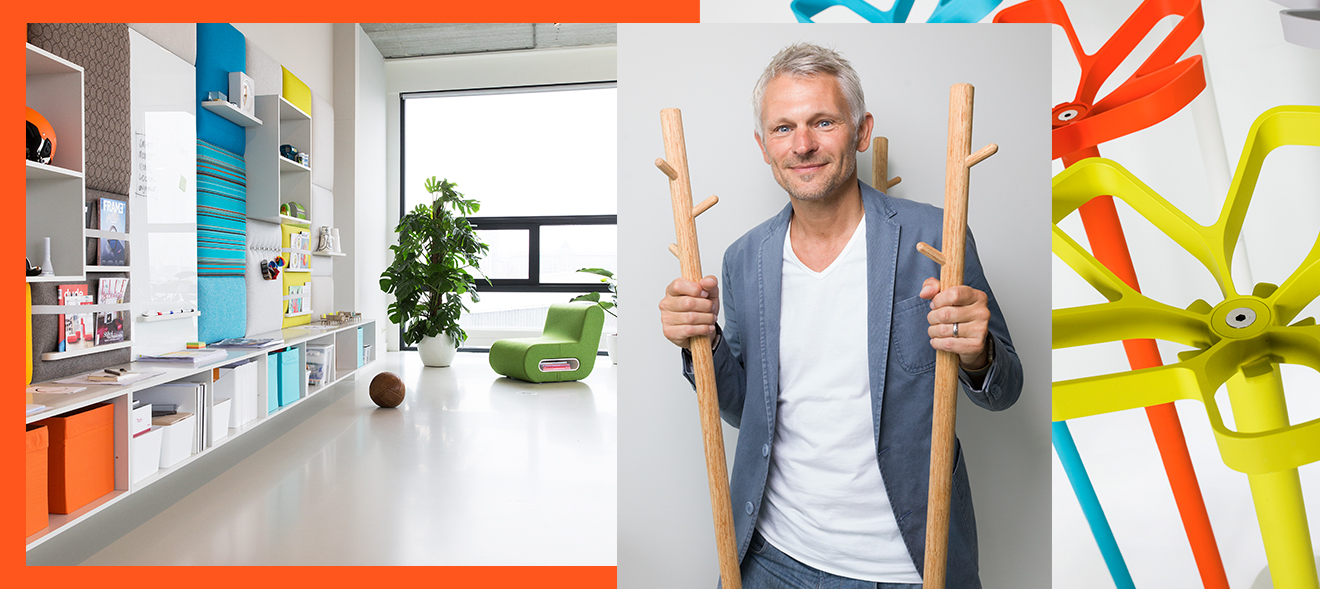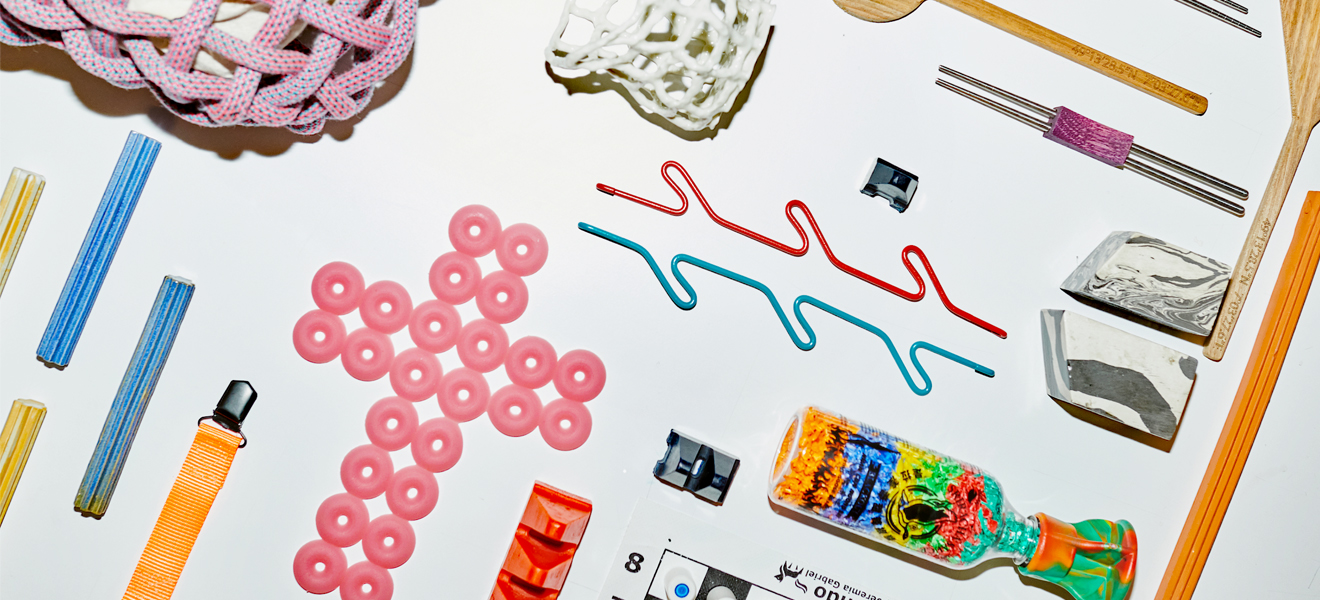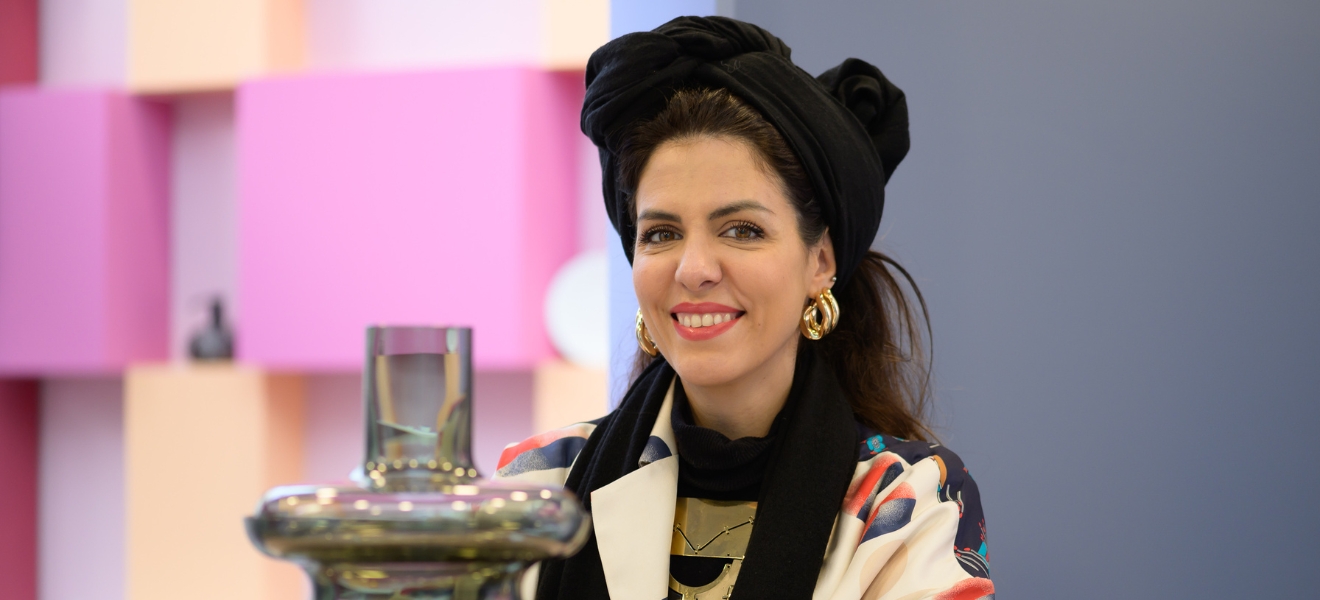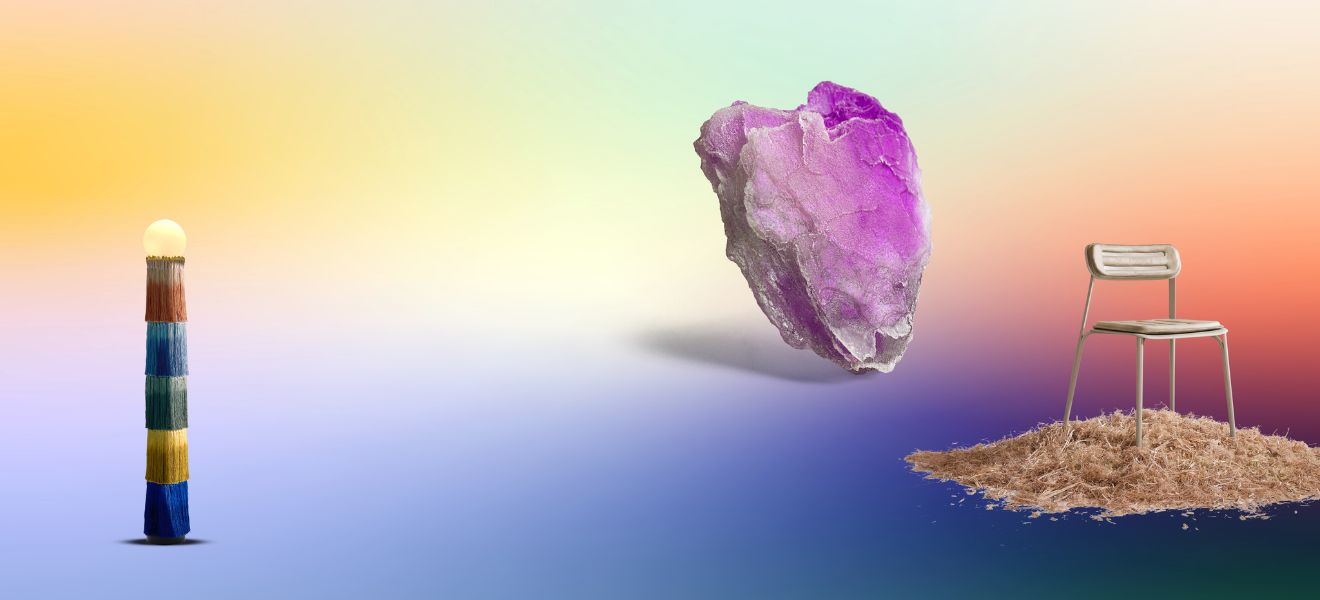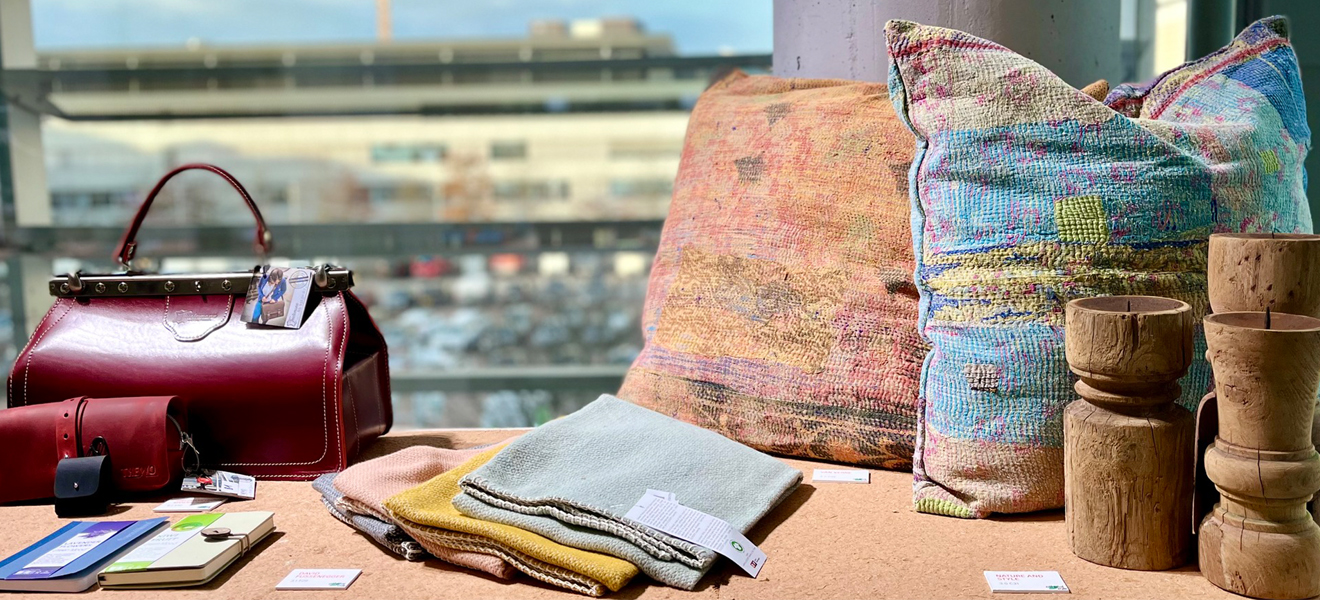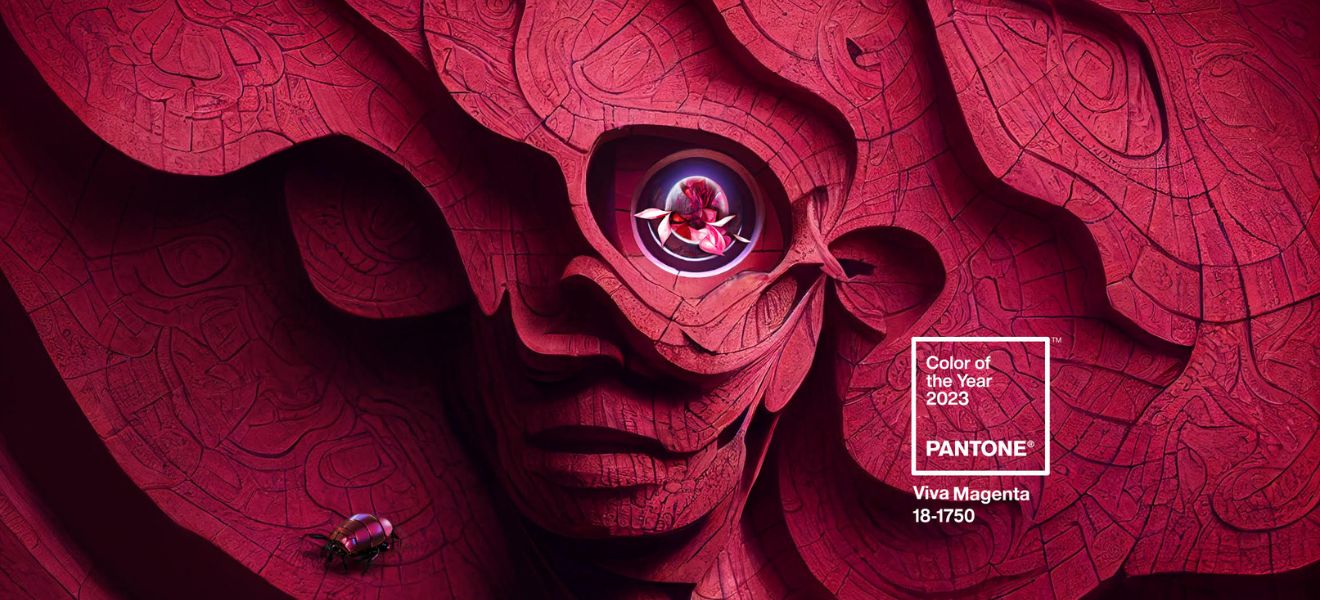Designs by industrial designer Robert Bronwasser are just as innovative and unconventional as his country of origin. He’s a smart operator from the Netherlands who’s styling and curating the 2018 Ambiente partner country presentation. Here, he talks to us about his vision, and why good design should also entertain.
Robert Bronwasser looks very youthful. Yet he was born in 1968, the son of an architect, and already has over a quarter of a century’s industrial design work under his belt, plus countless awards and iconic designs on his CV. He likes a good laugh, and he likes to share his humour whenever he can with people who use his interior accessories, furniture and home appliances. His philosophy is: “Create a smile.” He studied at the TU Delft, and ever since has followed a mnemonic maxim – design must be smart, modest, iconic, logical and enjoyable. Witty twists are typical of all his designs, including the seating – at his Amsterdam studio, you soon forget that you are in a three-storey office block! Surrounded by his own creations, Robert and his team develop handy things like folding scooters and upholstered wall storage areas.
Hello Robert Bronwasser, how would you describe your personal design philosophy?
My design motto is ‘Enjoy everyday design’. I want to create products that people enjoy every day. To do this I have created my design philosophy ‘SMILE’ based on the five elements that I believe create good design: Design needs to be smart, modest, iconic, logical and enjoyable. SMILE if you get it.
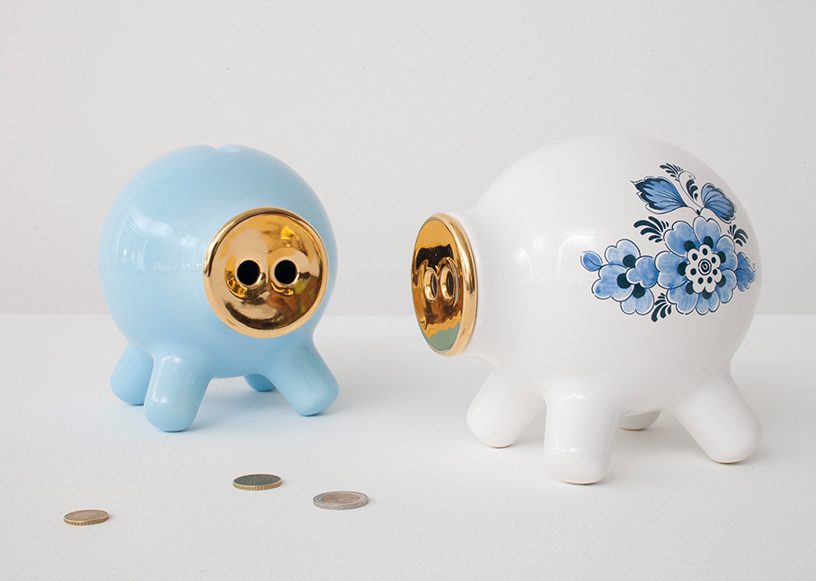
What inspires you in your work?
I have a very positive attitude and enjoy a lot of things. Food, music, traveling, art, people, these are my inspirations. I’m a big fan of minimalistic modern art like Marc Rothko, Barnett Newman and Jackson Pollock, my favourite band is Underworld. I like to look for contrasts when I travel: city, nature, beaches. My last vacation was in Thailand and we combined it all, every day was different. Also I have ‘negative’ inspirations: because I don’t like bad products or solutions, I try to improve these.
What is your greatest talent?
Probably the combination of passion, creativity and vision, but also knowing about marketing, materials and production techniques.
How can a product designer contribute to the user’s feeling of well-being in a room?
I believe products need to be enjoyable – not only easy on the eye but also a pleasure to use. The combination of good aesthetics with pleasant functionality is essential for well-being.
What materials do you most like to work with, and why?
In the past 25 years of my career I have worked with a lot of different materials and I don’t have a favourite, they all have good qualities, for example: plastic provides endless possibilities in terms of shape, detailing and colour, textiles have a wide variation in textures and patterns, ceramics have the quality of the material and finish, and wood has a warm, natural look.

How is your own home furnished? And what object would you never be parted from?
My home is decorated quite minimally. We have a modern, loft-style apartment with a lot of windows. We have a view over the IJ, the river that crosses Amsterdam. Most of the functional products are my own designs, and we started to collect art from young artists to decorate our home. It’s the art I would never be parted from, because these have a real emotional value.
Dutch design is admired for its simple, clean lines. To what extent does that reflect the mentality of the country?
The Dutch mentality is straight forward and pragmatic. We like to keep things simple and always look for a smart solution to solve problems. Because our country is so small and crowded it means we often have to think outside the box.
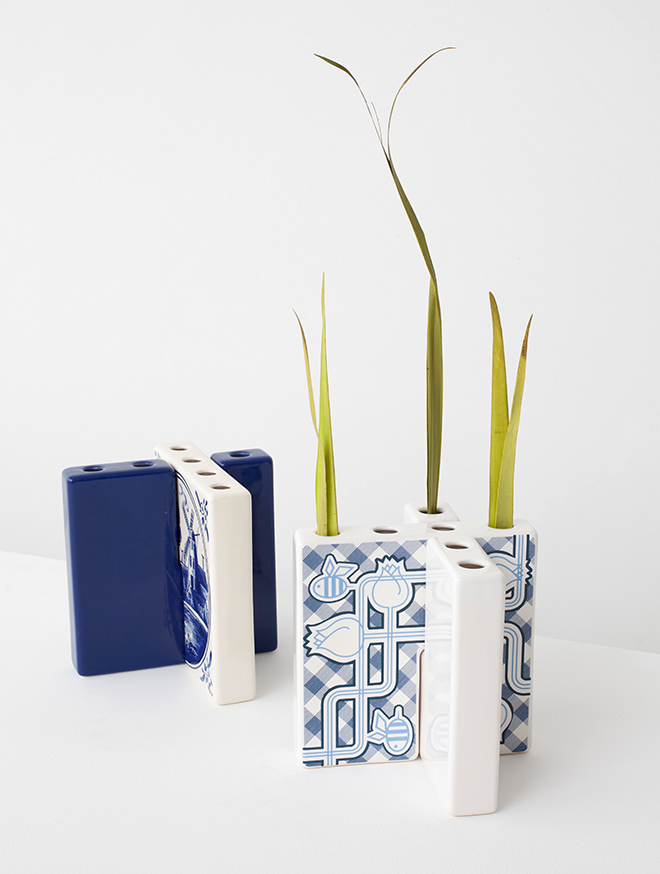
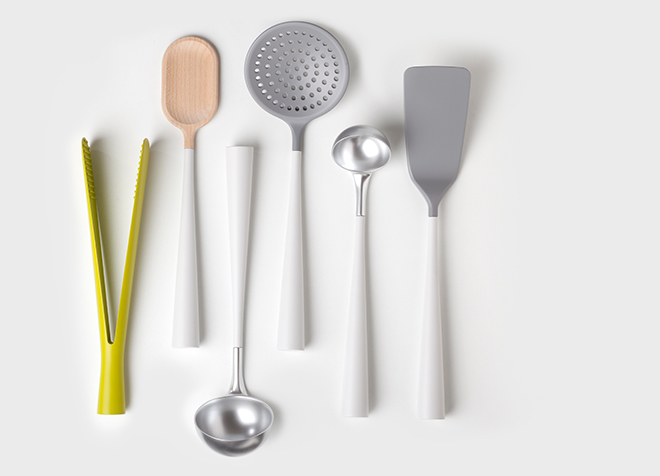
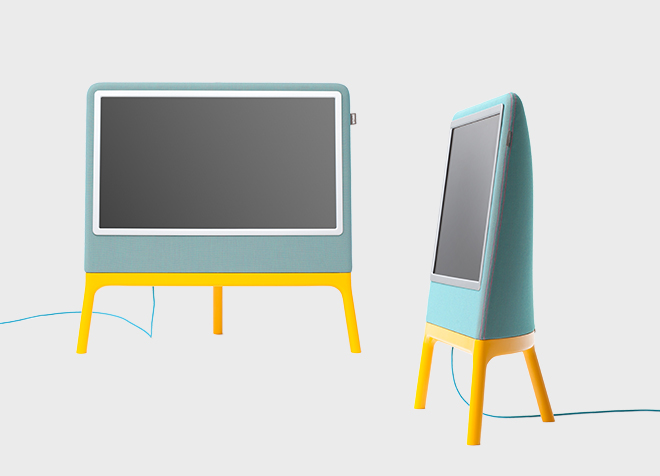
Your studio is based in Amsterdam. How strong an influence does this unconventional and culture-rich city have on your work?
I love Amsterdam because of its contrasts. It has an old traditional city centre, but also very new urban developments. You can find old art in museums as well as new galleries and exhibitions with modern art. For me, this environment is really inspirational.
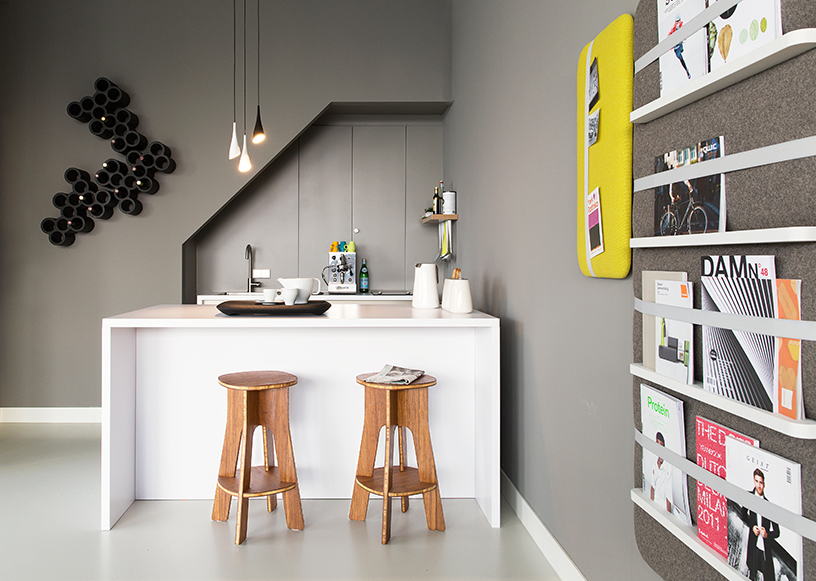
And what about mobility? When you designed the “Q-Scooter”, were you thinking of the typical Dutch form of two-wheeled transport? Its silhouette is reminiscent of a bicycle.
The Q-scooter was developed with the urban area in mind. I wanted to create a scooter that was city-proof, that’s why the frame is on the outside. It protects the more vulnerable electronic parts, and made it possible to create an open design for the scooter.
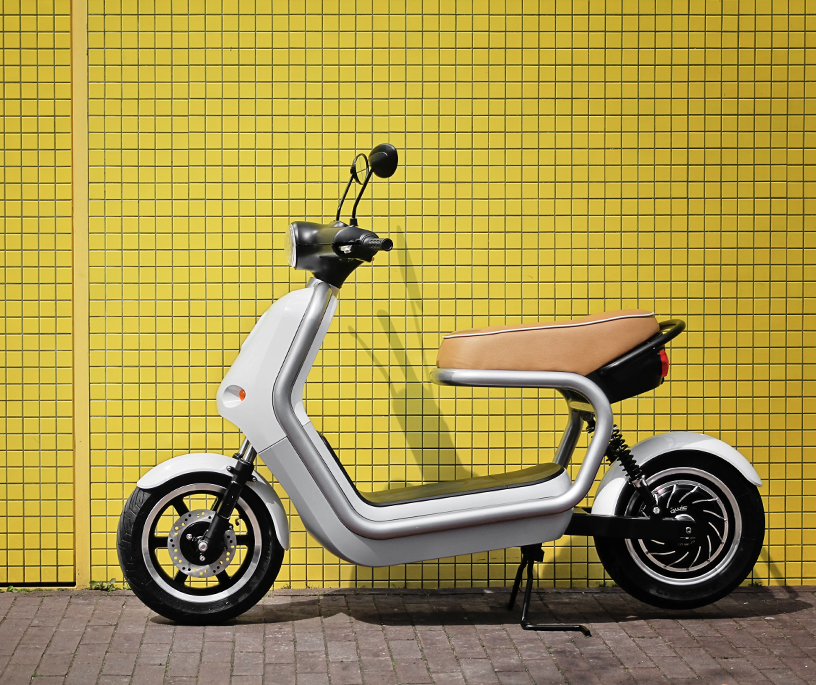

When designing the modular “Bricks” seating system, did you actually have a skyline in mind?
Yes I did! The working title for the seating system was ‘skyline’. I wanted to create a seating system like a landscape or a city, with different functions. A system that can change or grow, just like a city. The horizontal line forms a visual connection between the various elements.
How are you approaching the Ambiente partner country presentation?
The focal point is a giant ‘wardrobe’ with geometric patterns made up of lines and bright colours. It was designed as a tribute to the 100th anniversary of the famous Dutch art movement ‘De Stijl’. ‘De Stijl’ is a radical break from (over)decoration. I really like the abstract, minimalist approach in ‘De Stijl’ painting, furniture and architecture. It goes back to the essence of shape and colour and plays with compositions, geometry and primary colours to create the right balance. You can still see today how designers are influenced by this movement. At Ambiente, I want to inspire visitors and hopefully raise a smile. So the presentation is not only about Dutch Design but also about the Dutch mentality and creativity. It will be a place where people see everyday products in a different context.
In your opinion, where are the trends in product design heading in 2018?
I don’t focus too much on superficial trends like colours – they change every year. What I find more important and interesting are the bigger trends that really have an impact on product design. These are sustainability, social relevance and technical innovation. Sustainability: how can we use less material, create durable products and be part of the circular economy? Social relevance: how can design improve the way we live and work, or solve social problems? Technical innovation: how can we apply new materials and production techniques (like 3D printing), and what impact will the Internet of Things have?
Thank you very much for this interview!
